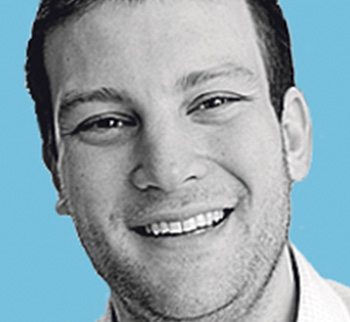In their earliest days, summer camps created an island unto themselves. Campers and staff retreated into the deep woods, isolated from society and the cultural norms of their community. Unencumbered by communal expectations or the news of the world, camp was a petri dish for experimentation and acculturation, affording both campers and staff the luxury of trying new practices and ways of thinking. From these camps – both Jewish and not – developed new ideas about society, community and religion.
Camps still serve as ripe grounds for experimentation, but in the age of modern communication, their isolation has dwindled. In my days as a camper, I remember poring over newspapers (usually the sports and comics sections) brought back by counsellors from their days off. Today, notwithstanding rules limiting smartphones, iPads and other devices kids feel they can’t do without, communication to and from camp is instant, bridging the island of camp with home.
Camp season had just begun when word spread of the murder of our three boys. The tragic news from Israel turned carefree places of celebration, education, and recreation into the locus of communal mourning.
In the days following the murders of Gilad, Eyal and Naftali, I communicated with each of our local residential camps and visited many. Camp directors shared the ways they were addressing the situation and the challenges they encountered. Throughout these conversations, the demonstration of educational thoughtfulness and intentionality, even in difficult circumstances, was remarkable, redoubling what we know: that camps play a sacred role in the education of young Jews.
The reactions were diverse. Some camps held special memorials and others added tfillot to their regular programs. Some cancelled the usual spirit sessions of singing and dancing, while others empowered counsellors to have conversations with their bunks. Some leaned on Israeli staff to lead discussions, while others used Canadian counsellors. Some developed summer-long projects dedicated to the boys’ memory, while others limited commemoration to a finite time.
In listening to these descriptions, I was struck by the layers of complexity of mourning such a tragedy at camp.
First, there’s the complexity of audiences. Camps teach campers young and old, and I was struck by the ways camps differentiated the message and approach based on age, maturity and closeness to the issue.
Second is the complexity of message. At its core, camp is about recreation and acculturation, a time to celebrate ourselves, our community and our Judaism. One camp director described dealing with the tragedy as akin to Israel’s juxtaposition of Yom Hazikaron and Yom Ha’atzmaut. Upholding the unique sanctity of each moment and message is a challenge made more acute by the overlapping nature of camp time.
Third, there’s the complexity of ownership. To what degree should the conversations and commemorations be driven by Israeli staff, who are closer and more intimately involved in the narrative, and to what degree should they be driven by Canadian staff, to demonstrate that this is not a moment of mourning exclusively for Israelis, but for all Jews?
Fourth is the complexity of ritual. Camps are driven by rituals – flag-raising, mifkad, tfillot, dining hall songs, etc. Some camps integrated commemoration into existing ritual, making it part of the camp experience. Others set it apart through programs and moments that were distinct from the regular ebb and flow of the day.
As violence escalates and the death toll mounts, camps continue to confront these issues, creating islands of pristine isolation while at the same time connecting campers, staff and families to the shared anguish of the Jewish People. This delicate balance is what it means to be a Jewish camp.
May we know a peaceful time, when campers and staff can again retreat into the deep woods.
